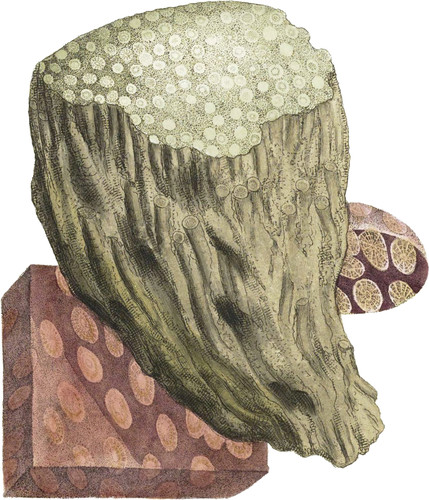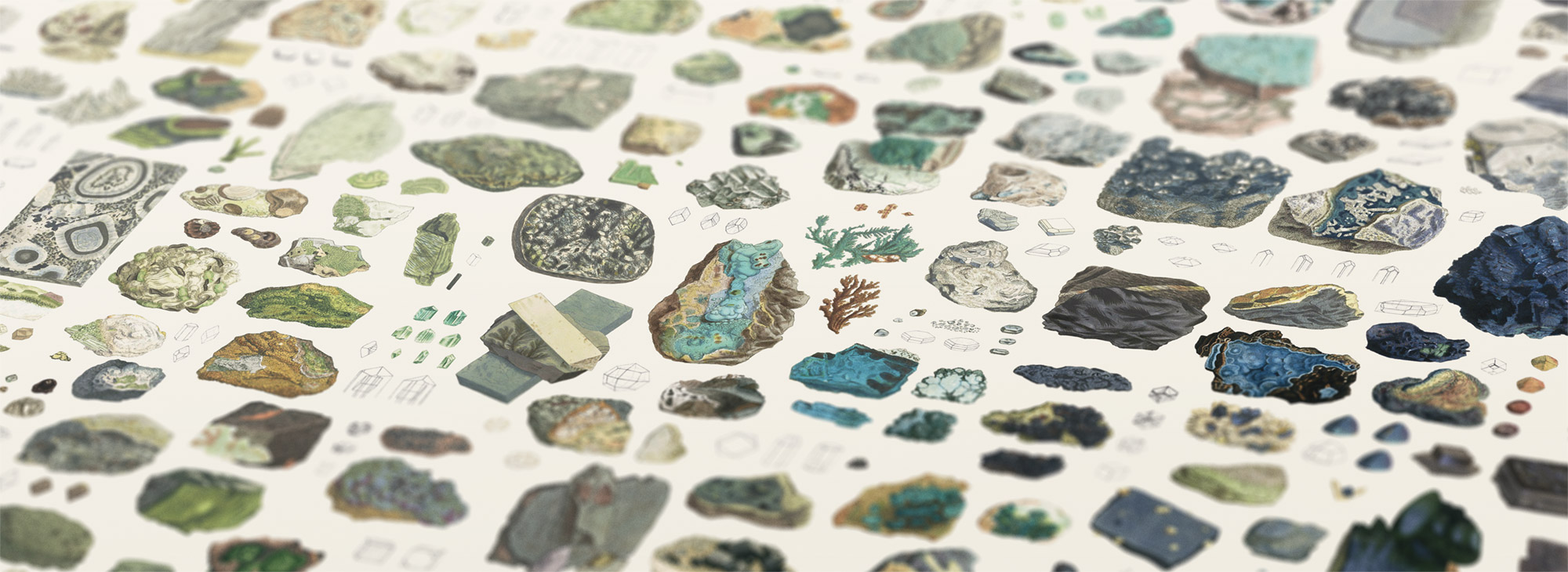 Enlarge
Enlarge
British Mineralogy
Coralliform Limestone
- Div. 2. Imitative.
Derbyshire, Cumberland, Westmoreland, and some parts of Scotland and Ireland, have large remains of these coralliform Limestones, often called Marbles; which, when compact, being cut and polished, serve for tables, slabs, and other ornamental masonry. They vary much in colour, are of different stronger or paler reds, and sometimes the Madrepore is light with a dark or black ground; but I have some exactly the reverse, given me by Lady Wilson, from the north of England, Some specimens are of a larger variety, or a species nearly allied to this. Perhaps there are numerous species, as we have no reason to suppose there were not as many Corals formerly as now, and some are so nearly alike that we can scarcely determine the different species. The redder ones which I have by favour of Gilbert Laing, Esq,, are found at Limeworth near Arundale in Dumfriesshire, and are often very beautiful; they are commonly called Bengangand Aboyne Marble. Thin is is a larger species than that before described, and is lodged in red Limestone, which might be called Eisen-calk with as much propriety by the Germans, as Quartz or Flint, coloured by red Oxide of Iron, is called Eisen-kiesel, and Clay under similar circumstances Eisen-thon. If the nomenclature is good, there ought to be such a concordance, when nature agrees with it.
I have given these examples to show some varieties depending on what is commonly called petrifaction, and also to show that the remains of organized substances have passed into the common soil from whence they in part originated, and are now become evident to us by the memorials left as proofs of such existence. In Limestone many curious subjects are to be found ; but it is only intended here to give a general idea of them; and after showing a few other sports of Nature in different substances, it is expected that the remainder will be pretty well understood in mineralogical hands.

